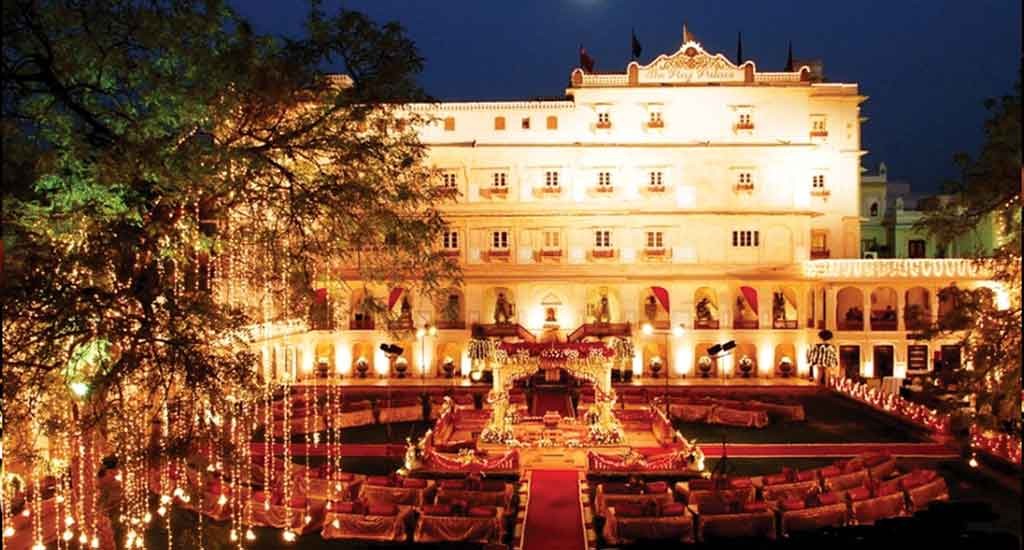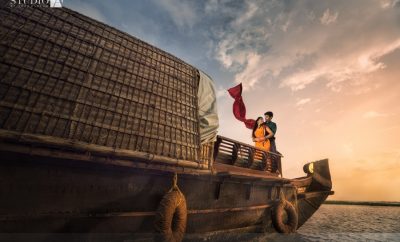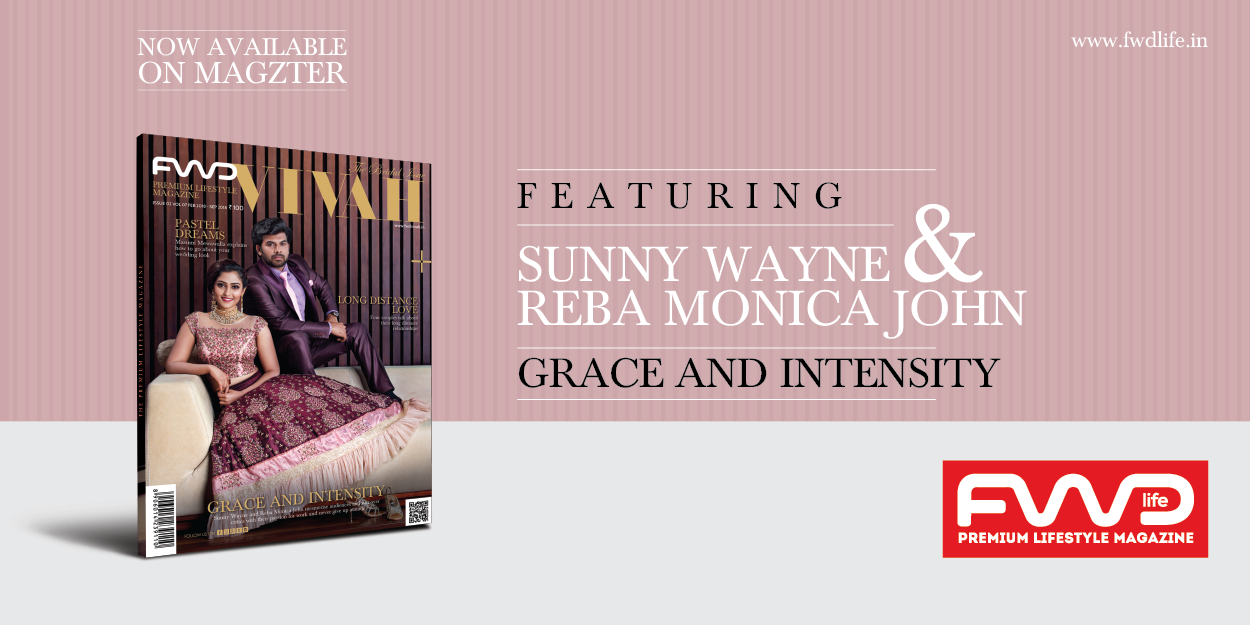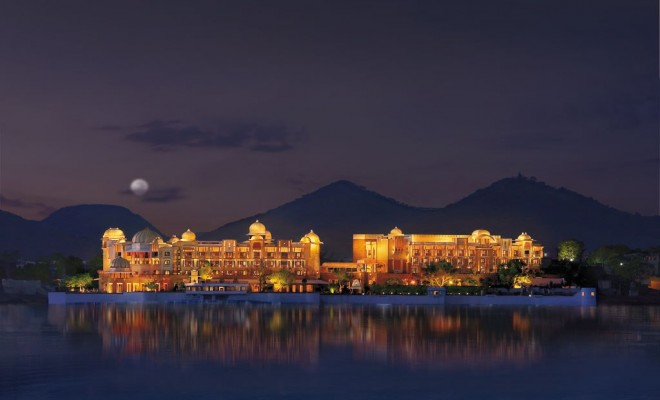
Udaipur Palace: Your Ultimate Wedding Destination
Text Maria John Photos Various sources
As Octopussy’s home in the James Bond movie to magical settings for celebrity weddings, the palaces of Udaipur are world renowned architectural marvels. The largest of them all is the City Palace; a fusion of Mughal and Rajasthani styles.
With bold chatris and elegant colonnades, the Udaipur Palaces reflect the regal aesthetics of royal India. One of the ultimate Indian wedding destinations, the Udaipur City Palace is just the place to inspire a royal Indian wedding.
An enchanting full moon strains silver into the calm waters. A gentle breeze dances along the shores. The City Palace rises into the night like a multi-tier wedding cake against the Aravalli Mountains. The proud seat of the Mewar dynasty, the picturesque palace was built over a period of 300 years beginning in 1559. Legend has it that Maharana Udai Singh II was out hunting when he met a hermit meditating on a hill along the shore of Lake Pichola. The hermit told him to build a palace at that very spot and the king shifted the capital of the Mewar Kingdom from Chittor to Udaipur. Over the years that transpired, the palace kept growing, replete with stories of royalty, war and peace. Percy Brown, the renowned British scholar, remarked “There is something more than architecture in these palaces. Every stone is touched with the spirit of romance.”The City Palace is not just the biggest palace complex in Rajasthan, but it is the secret keeper of seventy six generations of Sisodia Rajputs who added and subtracted to the structure to suit their needs. As the clan was part of the Sun Dynasty (Suryavanshi or Sisodia Rajputs) the palace faces east, welcoming the morning rays.
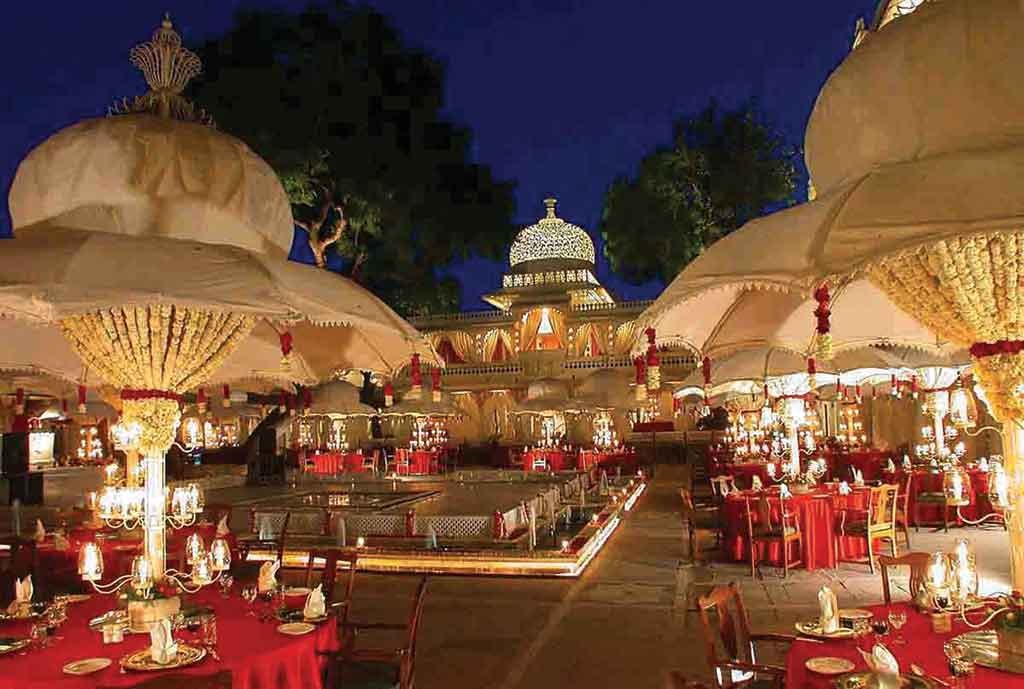 A glorious celebration of Mughal and Rajasthani architecture along with traces of Medieval, European and Chinese styles, the palace is built in granite and marble. One really does wonder how so many elements could create such a homogenous design. The almost fort like structure is visually deconstructed by towering cupolas, turrets, balconies and terraces. The palace is approached by impressive gateways or Pols. Murals in the artistic style of the Rajputs decorate the walls. The walk from the main gate (Bari Pol) takes you to the Manek Chowk which is a big open yard where processions used to take place. An exquisite hundred feet façade hides the complex which comprises of open courts, gardens and halls at various levels. The palace is a huge porous structure as the open spaces serve to bring in ample light and ventilation which is a typical trait of traditional tropical architecture.The interiors of the palace might seem confusing to you at first with its steep stairs and meandering passages, but then you learn that these were ways to stop intruders. The widths of the passages are narrow so that no one could draw out weapons. Every inch of the rooms is laid out with delicate craftsmanship. Mirror work, jewels, intricate paintings, colored glass and filigree work create a mesmerizing effect, reminding you of the grandeur of a bygone era.
A glorious celebration of Mughal and Rajasthani architecture along with traces of Medieval, European and Chinese styles, the palace is built in granite and marble. One really does wonder how so many elements could create such a homogenous design. The almost fort like structure is visually deconstructed by towering cupolas, turrets, balconies and terraces. The palace is approached by impressive gateways or Pols. Murals in the artistic style of the Rajputs decorate the walls. The walk from the main gate (Bari Pol) takes you to the Manek Chowk which is a big open yard where processions used to take place. An exquisite hundred feet façade hides the complex which comprises of open courts, gardens and halls at various levels. The palace is a huge porous structure as the open spaces serve to bring in ample light and ventilation which is a typical trait of traditional tropical architecture.The interiors of the palace might seem confusing to you at first with its steep stairs and meandering passages, but then you learn that these were ways to stop intruders. The widths of the passages are narrow so that no one could draw out weapons. Every inch of the rooms is laid out with delicate craftsmanship. Mirror work, jewels, intricate paintings, colored glass and filigree work create a mesmerizing effect, reminding you of the grandeur of a bygone era.
Gardens: The Amar Vilas, or pleasure pavilion, is an elevated garden with a marble tub. The family gathered here to celebrate occasions. Badi Mahal is also a garden situated on a rock formation within the palace structure.
Galleries: Bhim Vilas exhibits pictures of Radha and Krishna, Chini Chitrashala shows Chinese art and Choti Chitrashali shows pictures of peacocks which was an important symbol to the dynasty. The Krishna Vilas chamber houses miniature paintings and the Laxmi vilas chowk houses Mewari art. All the halls are wide with colonnades and embellished ceilings.
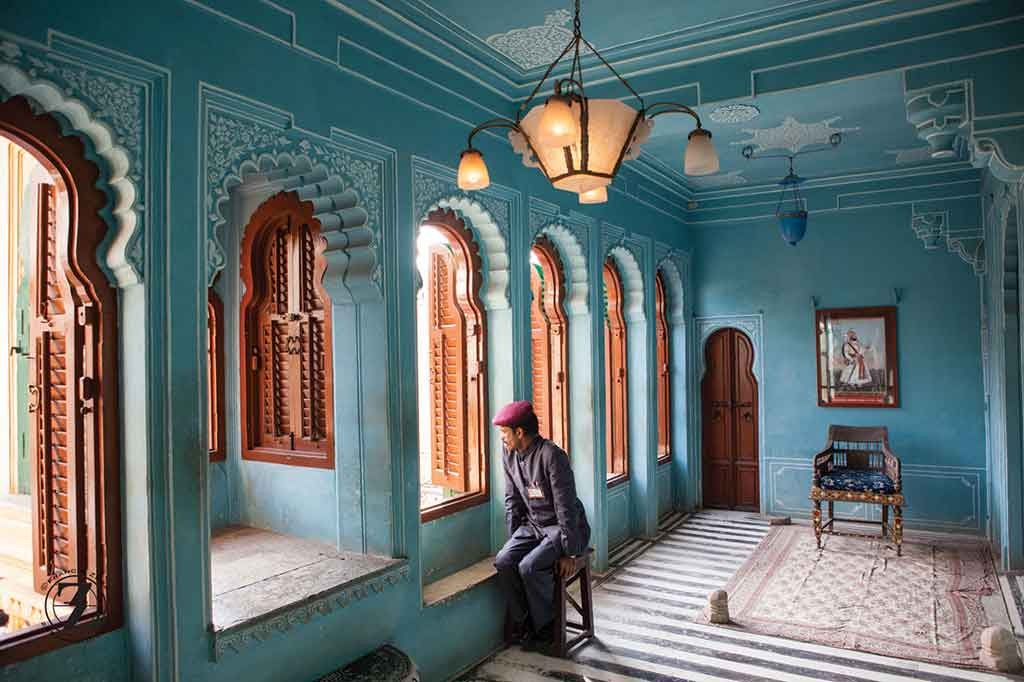
Courts: Manak Mahal is an enclosure to receive guests. It has a raised area which is completely covered in mirrors and dazzles you with a play of light. The Sheesh Mahal or hall of mirrors also gives the same effect as you enter a space covered in mirror tiles that you feel like you are in a large disco ball. The Mor Chowk or Peacock square leads to the inner courts. Three large peacocks, to represent summer, winter and monsoon, stand tall in jharokhas (niches) embellished with colored glass mosaic. Smaller courts and chambers lead from this space to the inner most quarters of the women known as Zenana Mahal. The women’s hall now plays host to many weddings, events and musical soirees. The design aesthetic is carried throughout with highly detailed alcoves and balconies.
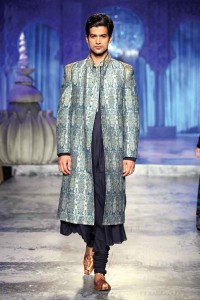
The complex has over eleven palaces and other facilities. The beauty of the structure is the kind of open and closed spaces that it creates on various levels which creates a very interesting architectural section. Exquisite craftsmanship has been displayed in the construction. The aura of the City Palace gives you the royal wedding you dream of.Make a grand entrance with Rajasthani entertainment ; the traditional ghoomar or kalbelia or kachchigodi dance. Entertain your guests with Rajasthani puppets or organize a game of polo before the functions.Walk in like a prince or princess in flowing embroidered couture. Make your Sabyasachis and Tarun Tahilianis work with hand crafted jhoothis or Louboutin heels. The men can top it off with a traditional bejeweled turban. Let the ladies dazzle in Rajasthani jewelry that took centre stage in Jodha Akbar.The palatial domes and intricate doorways are great ideas for your wedding Mandap. Flowers and textile are staples in Indian weddings. Add elements of mirror work from the halls of the City Palace, royal prints for your upholstery, detailed furniture and a regal palette.
Every detail counts; be it from the cutlery to the wedding souvenirs. Draw inspiration from the palace and choose your elements with care. Try bejeweled cutlery and mirror work or filigree boxes for your souvenirs. Present your guests with the flavors of Udaipur; handicrafts, sweets and music.

